Tabular Data Pipeline with Concurrent Steps - Jupyter Notebook
This example demonstrates an ML pipeline which preprocesses data in two concurrent steps, trains two networks, where each network's training depends upon the completion of its own preprocessed data, and picks the best model. It is implemented using the PipelineController class.
The pipeline uses four Tasks (each Task is created using a different notebook):
- The pipeline controller Task (tabular_ml_pipeline.ipynb)
- A data preprocessing Task (preprocessing_and_encoding.ipynb)
- A training Task (train_tabular_predictor.ipynb)
- A better model comparison Task (pick_best_model.ipynb)
The PipelineController class includes functionality to create a pipeline controller, add steps to the pipeline, pass data from one step to another, control the dependencies of a step beginning only after other steps complete, run the pipeline, wait for it to complete, and cleanup afterwards.
In this pipeline example, the data preprocessing Task and training Task are each added to the pipeline twice (each is in two steps). When the pipeline runs, the data preprocessing Task and training Task are cloned twice, and the newly cloned Tasks execute. The Task they are cloned from, called the base Task, does not execute. The pipeline controller passes different data to each cloned Task by overriding parameters. In this way, the same Task can run more than once in the pipeline, but with different data.
The data download Task is not a step in the pipeline, see download_and_split.
Pipeline Controller and Steps
In this example, a pipeline controller object is created.
pipe = PipelineController(
project="Tabular Example",
name="tabular training pipeline",
add_pipeline_tags=True,
version="0.1"
)
Preprocessing Step
Two preprocessing nodes are added to the pipeline. These steps will run concurrently.
pipe.add_step(
name='preprocessing_1',
base_task_project='Tabular Example',
base_task_name='tabular preprocessing',
parameter_override={
'General/data_task_id': TABULAR_DATASET_ID,
'General/fill_categorical_NA': 'True',
'General/fill_numerical_NA': 'True'
}
)
pipe.add_step(
name='preprocessing_2',
base_task_project='Tabular Example',
base_task_name='tabular preprocessing',
parameter_override={
'General/data_task_id': TABULAR_DATASET_ID,
'General/fill_categorical_NA': 'False',
'General/fill_numerical_NA': 'True'
}
)
The preprocessing data Task fills in values of NaN data based on the values of the parameters named fill_categorical_NA
and fill_numerical_NA. It will connect a parameter dictionary to the Task which contains keys with those same names.
The pipeline will override the values of those keys when the pipeline executes the cloned Tasks of the base Task. In this way,
two sets of data are created in the pipeline.
In the preprocessing data Task, the parameter values in data_task_id, fill_categorical_NA, and fill_numerical_NA are overridden.
configuration_dict = {
'data_task_id': TABULAR_DATASET_ID,
'fill_categorical_NA': True,
'fill_numerical_NA': True
}
configuration_dict = task.connect(configuration_dict) # enabling configuration override by clearml
ClearML tracks and reports each instance of the preprocessing Task.
The raw data appears as a table in PLOTS.
These images are from one of the two preprocessing Tasks.
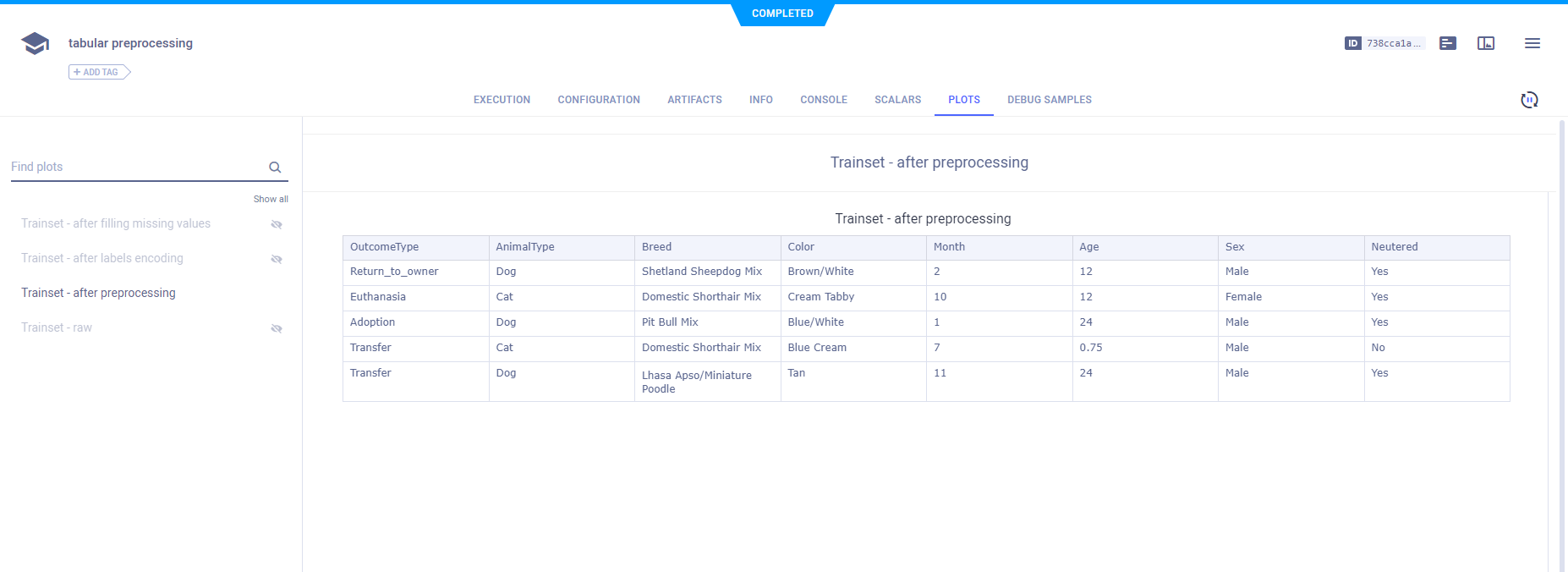
The data after filling NA values is also reported.

After an outcome dictionary (label enumeration) is created, it appears in ARTIFACTS > OTHER > Outcome Dictionary.
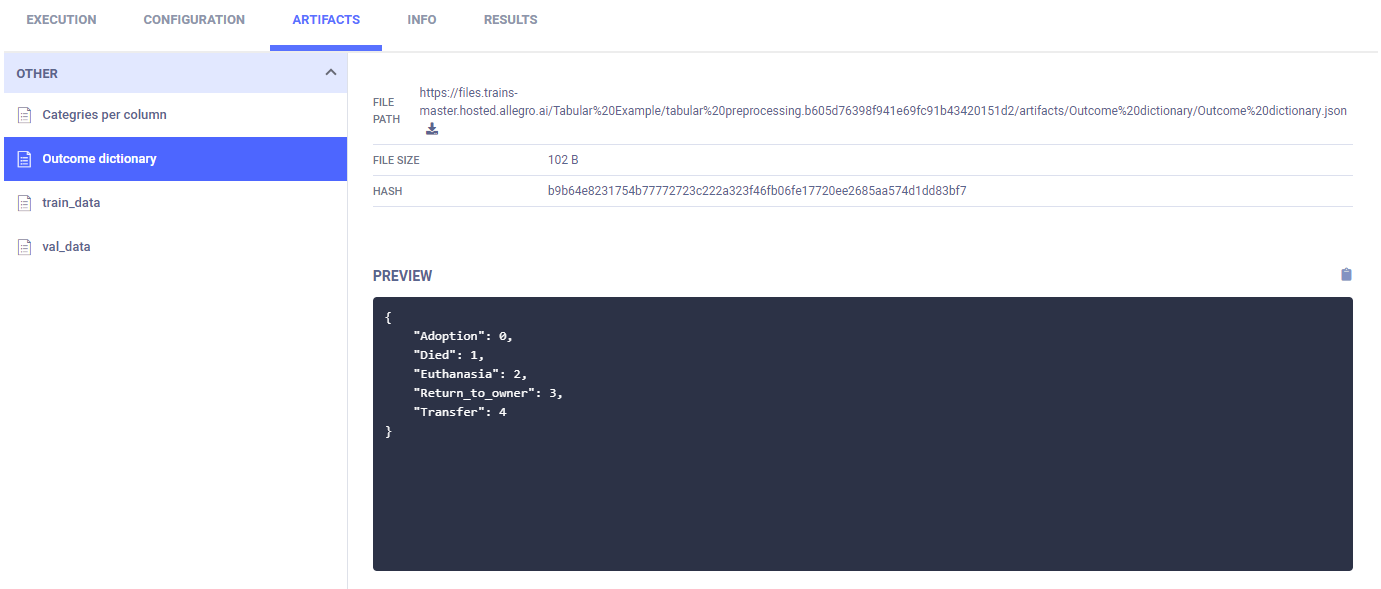
The training and validation data is labeled with the encoding and reported as table.
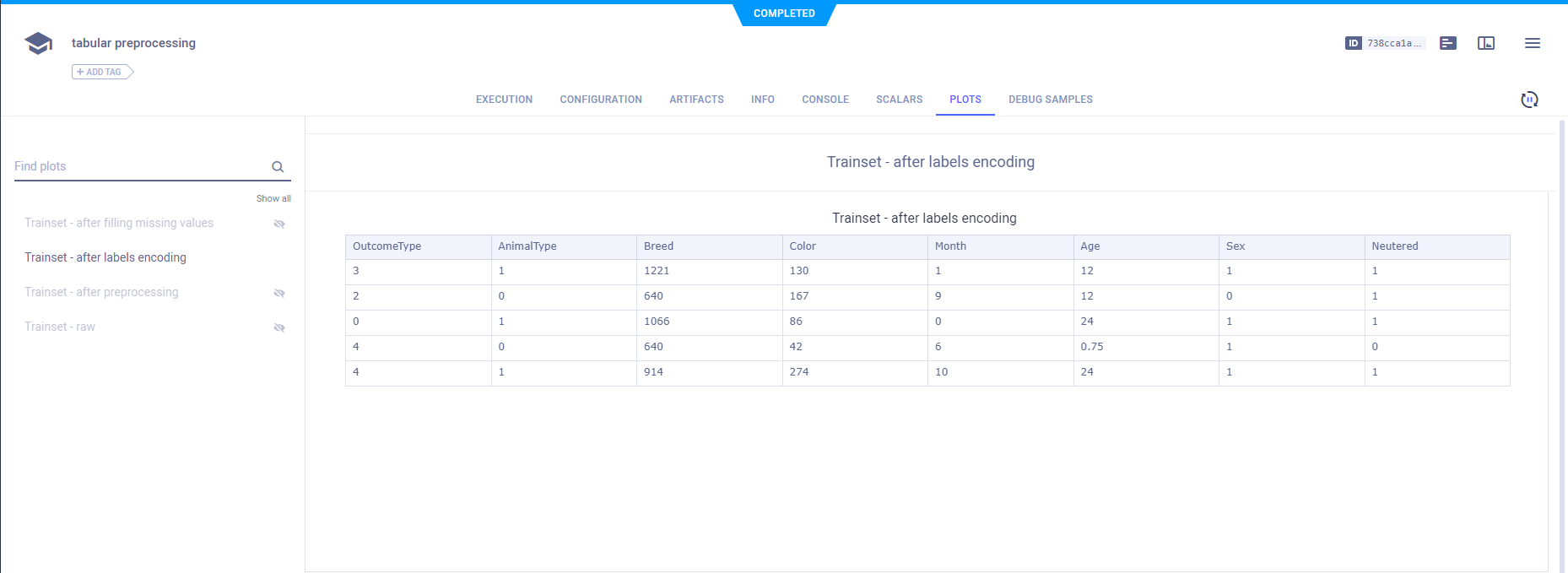
The column categories are created and uploaded as artifacts, which appear in appears in ARTIFACTS > OTHER > Outcome Dictionary.

Finally, the training data and validation data are stored as artifacts.
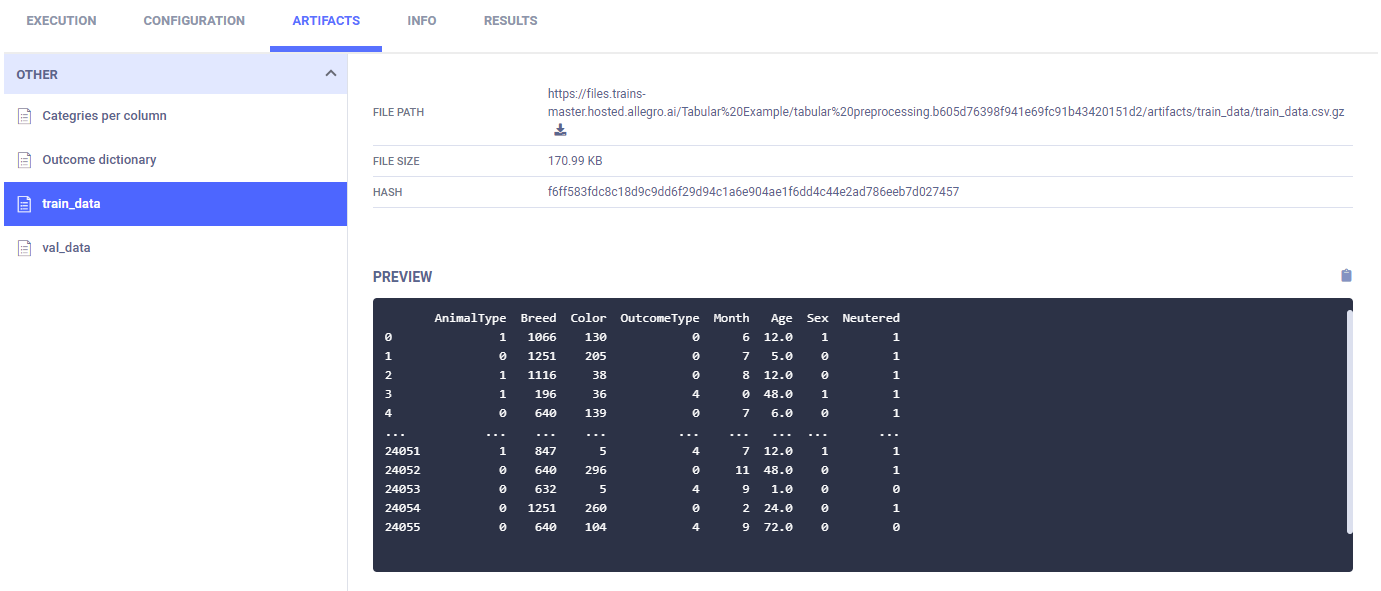
Training Step
Each training node depends upon the completion of one preprocessing node. The parameter parents is a list of step names indicating all steps that must complete before the new step starts. In this case, preprocessing_1 must complete before train_1 begins, and preprocessing_2 must complete before train_2 begins.
The ID of a Task whose artifact contains a set of preprocessed data for training will be overridden using the data_task_id key. Its value takes the form ${<stage-name>.<part-of-Task>}. In this case, ${preprocessing_1.id} is the ID of one of the preprocessing node Tasks. In this way, each training Task consumes its own set of data.
pipe.add_step(
name='train_1',
parents=['preprocessing_1'],
base_task_project='Tabular Example',
base_task_name='tabular prediction',
parameter_override={
'General/data_task_id': '${preprocessing_1.id}'
}
)
pipe.add_step(
name='train_2',
parents=['preprocessing_2'],
base_task_project='Tabular Example',
base_task_name='tabular prediction',
parameter_override={
'General/data_task_id': '${preprocessing_2.id}'
}
)
In the training Task, the data_task_id parameter value is overridden. This allows the pipeline controller to pass a
different Task ID to each instance of training, where each Task has an artifact containing different data.
configuration_dict = {
'data_task_id': TABULAR_DATASET_ID,
'number_of_epochs': 15, 'batch_size': 100, 'dropout': 0.3, 'base_lr': 0.1
}
configuration_dict = task.connect(configuration_dict) # enabling configuration override by clearml
ClearML tracks and reports the training step with each instance of the newly cloned and executed training Task.
ClearML automatically logs training loss and learning. They appear in SCALARS.
The following images show one of the two training Tasks.
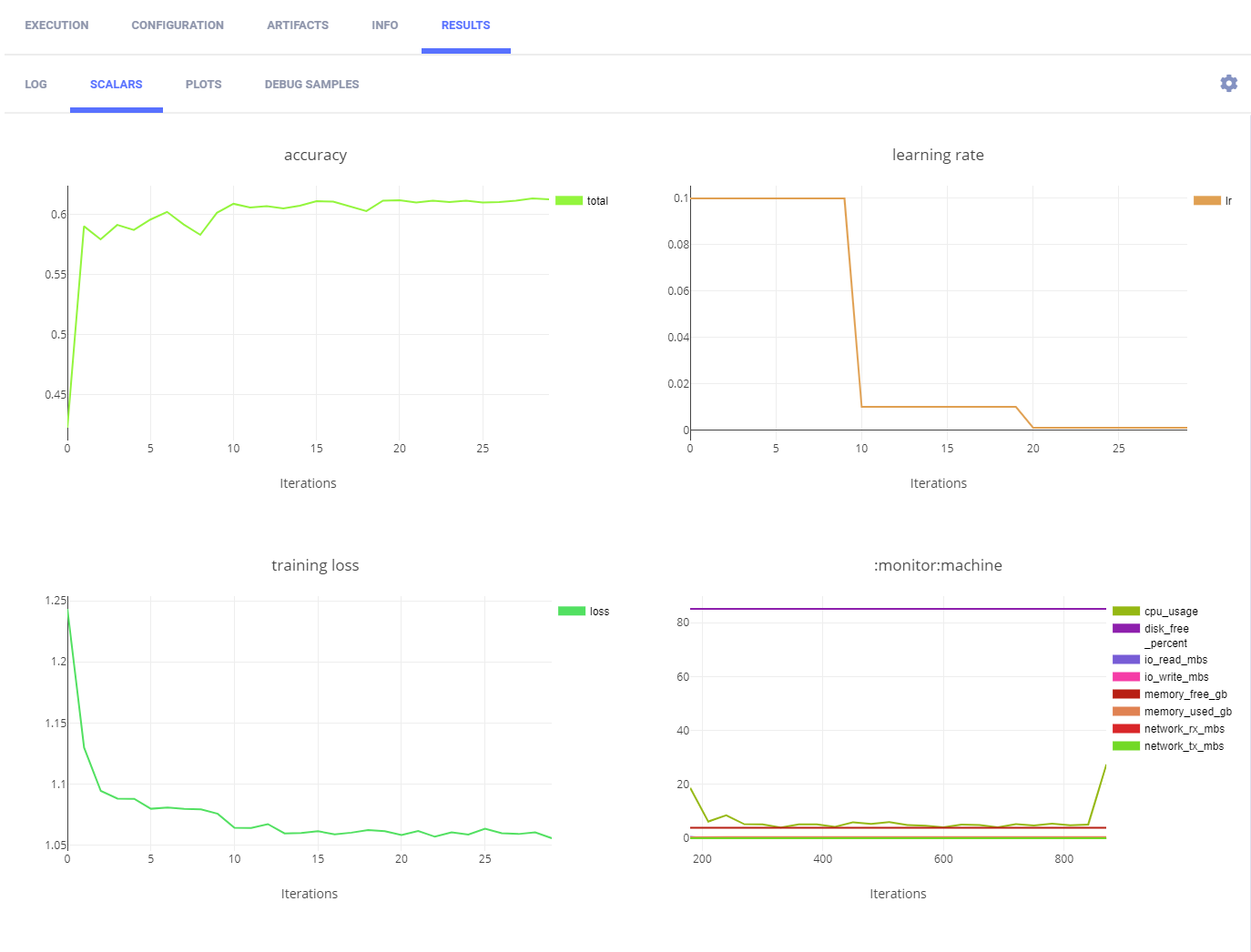
Parameter dictionaries appear in the General subsection.

The TensorFlow Definitions appear in the TF_DEFINE subsection.
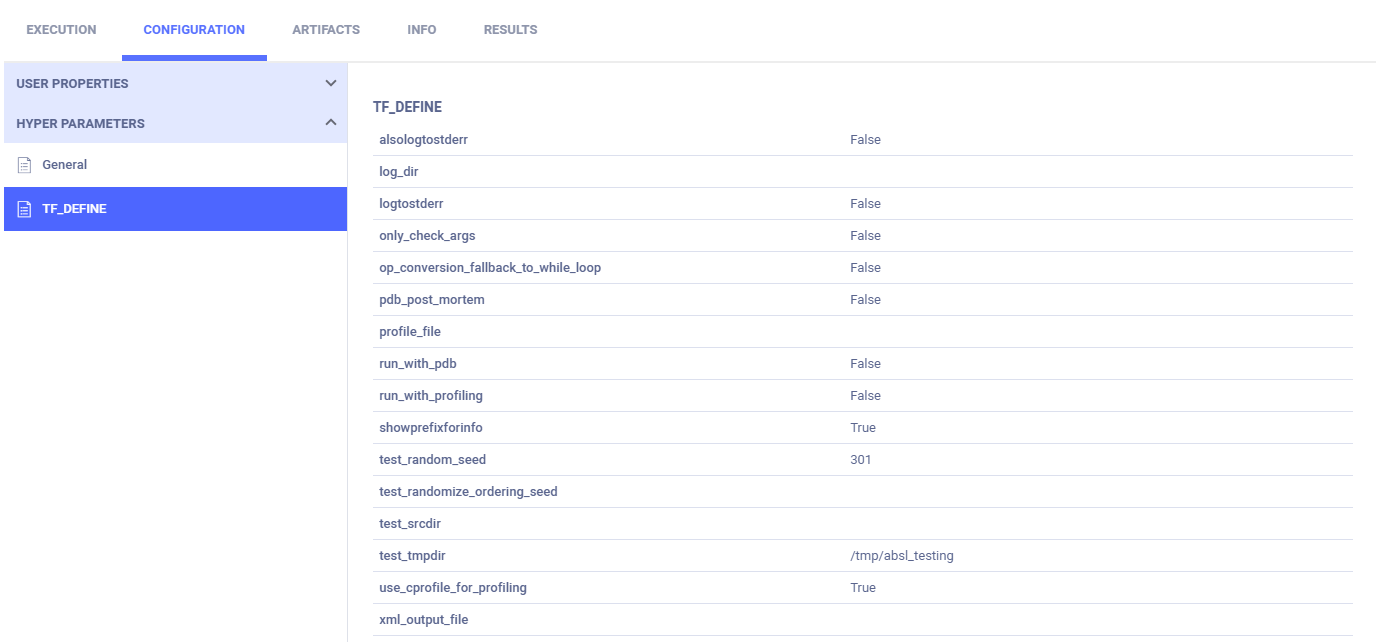
Best Model Step
The best model step depends upon both training nodes completing and takes the two training node Task IDs to override.
pipe.add_step(
name='pick_best',
parents=['train_1', 'train_2'],
base_task_project='Tabular Example',
base_task_name='pick best model',
parameter_override={
'General/train_tasks_ids': '[${train_1.id}, ${train_2.id}]'
}
)
The IDs of the training Tasks from the steps named train_1 and train_2 are passed to the best model Task. They take the form ${<stage-name>.<part-of-Task>}.
In the best model Task, the train_tasks_ids parameter is overridden with the Task IDs of the two training tasks.
configuration_dict = {
'train_tasks_ids':
['c9bff3d15309487a9e5aaa00358ff091', 'c9bff3d15309487a9e5aaa00358ff091']
}
configuration_dict = task.connect(configuration_dict) # enabling configuration override by clearml
The logs show the Task ID and accuracy for the best model in CONSOLE.

The link to the model details is in ARTIFACTS > Output Model.

The model details appear in the MODELS table > >GENERAL.
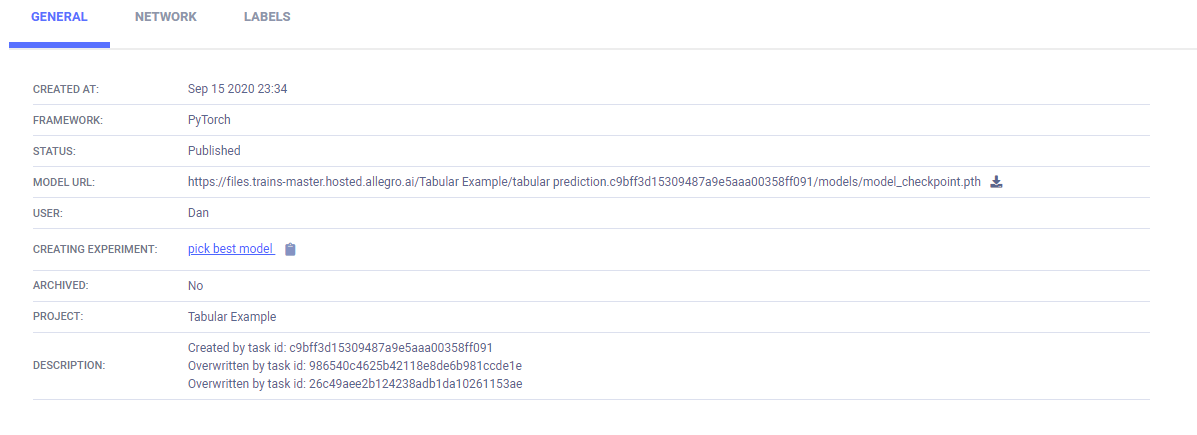
Pipeline Start, Wait, and Cleanup
Once all steps are added to the pipeline, start it. Wait for it to complete. Finally, cleanup the pipeline processes.
# Starting the pipeline (in the background)
pipe.start()
# Wait until pipeline terminates
pipe.wait()
# cleanup everything
pipe.stop()
ClearML reports the pipeline with its steps in PLOTS.
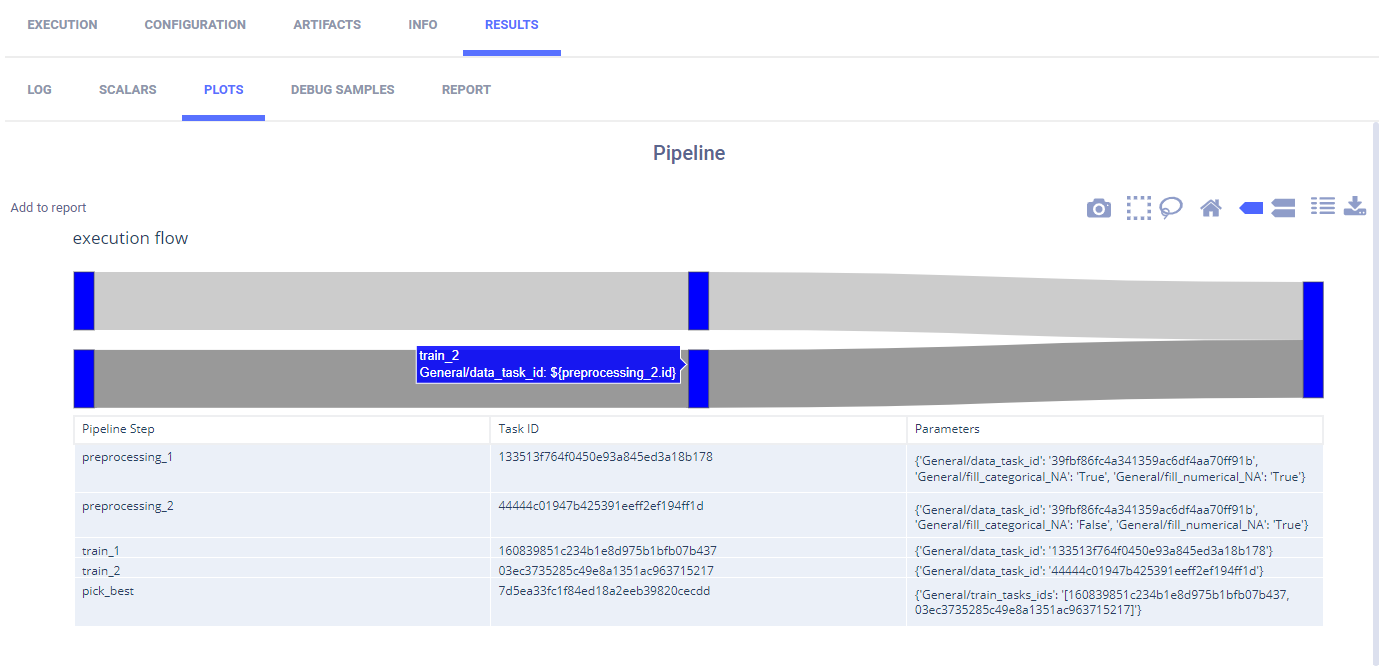
By hovering over a step or path between nodes, you can view information about it.
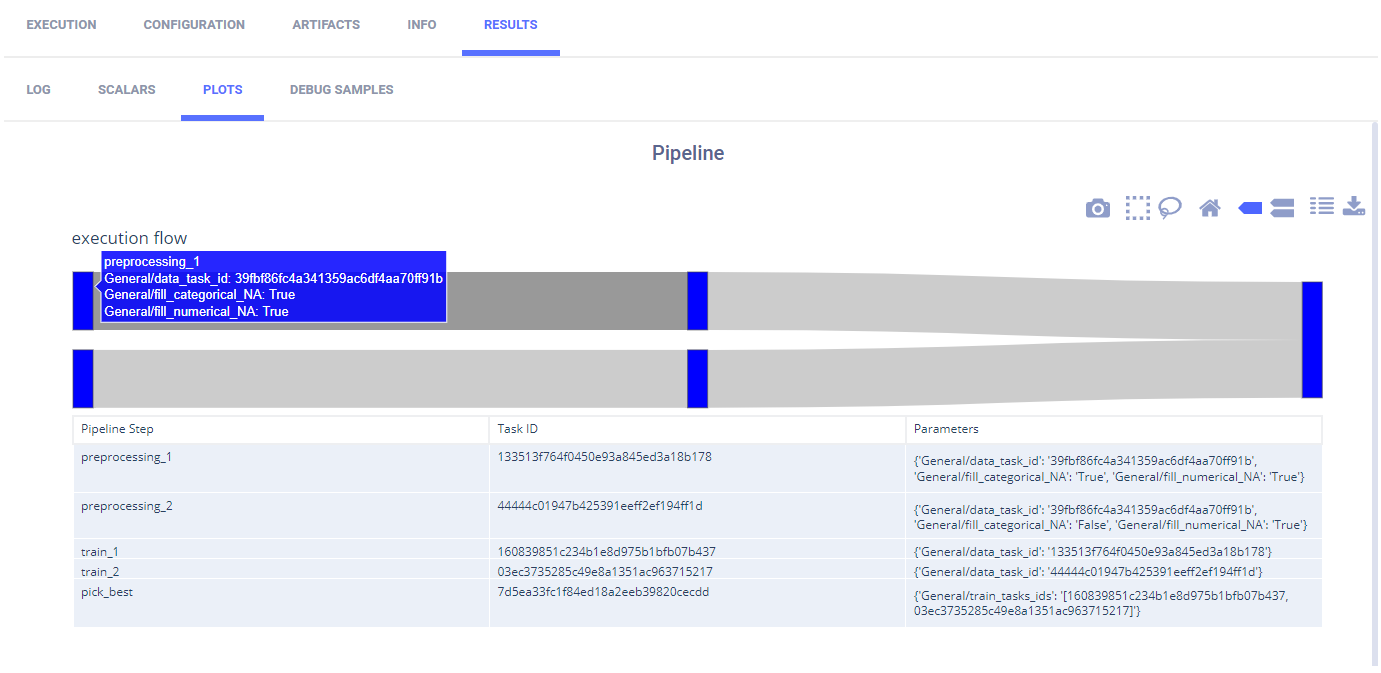
Running the Pipeline
To run the pipeline:
Download the data by running the notebook download_and_split.ipynb.
Run the script for each of the steps, if the script has not run once before.
Run the pipeline controller one of the following two ways:
- Run the notebook tabular_ml_pipeline.ipynb.
- Remotely execute the Task - If the Task
tabular training pipelinewhich is associated with the projectTabular Examplealready exists in ClearML Server, clone it and enqueue it to execute.
If you enqueue a Task, a worker must be listening to that queue for the Task to execute.